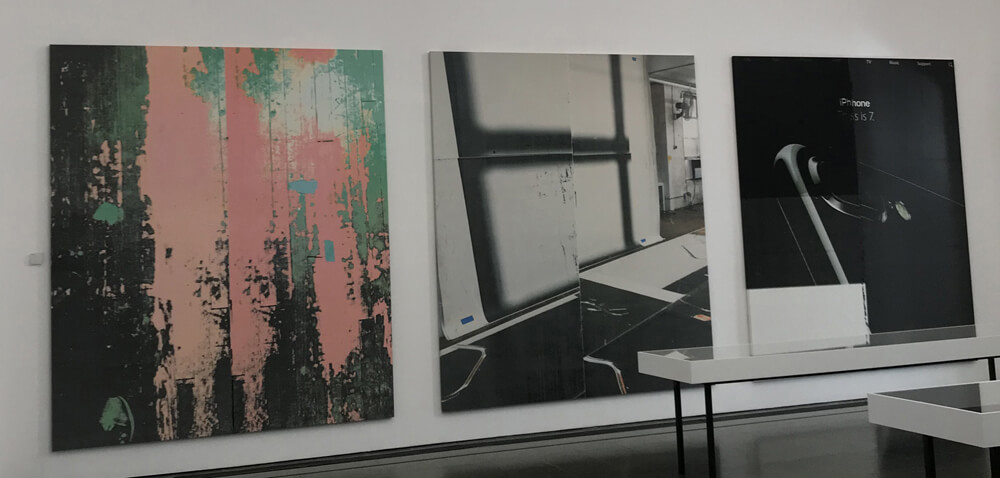Text by CLOT Magazine

American artist Wade Guyton, instead of a paintbrush, uses digital technologies – iPhones, cameras, computers and Epson printers – to create a body of work that translates digital information into physical paintings and compositions on paper. His latest exhibition, Das New Yorker Atelier, Abridged, is currently on display at Serpentine Galleries in London. Our editors enjoyed attending a private tour with curator Rebecca Lewin last October.
Lewin told them that in early 2002 Guyton started experimenting with the scope of what a printer can do, so he was working with a desktop inkjet printer and asking it to print onto a piece of paper to create patterns or repetitions.
Then he started moving from paper to canvas, and in 2015 he put a sort of moratoria for himself for exhibiting in institutions. What would have happened to his practice if he wasn’t thinking about the end space? Finding the right answer to this question was the conceptual framework behind the exhibition Das New Yorker Atelier, Abridged*, Rebecca Lewin told them.
The work presented in this exhibition was produced between 2015 and 2016 and can be viewed as a single body of work. The first installation was at Museum Brandhorst in Munich, so the Germanic title references that exhibition. For more than a decade, Wade Guyton has been exploring the impact of digital technologies on artistic processes blurring the boundaries between the digital and the physical worlds.
Guyton utilises iPhones, computers, inkjet printers and canvases that are too thick for the printers and have been treated to become resistant to ink absorption. So the printer can generate distortions and disruptions of the image, drops of ink, glitches and smears that dramatically affect the work. On the other hand, the physical world is represented by physical parameters such as the level of humidity in his New York studio or the views he was able to access dictates the composition of the painting.






